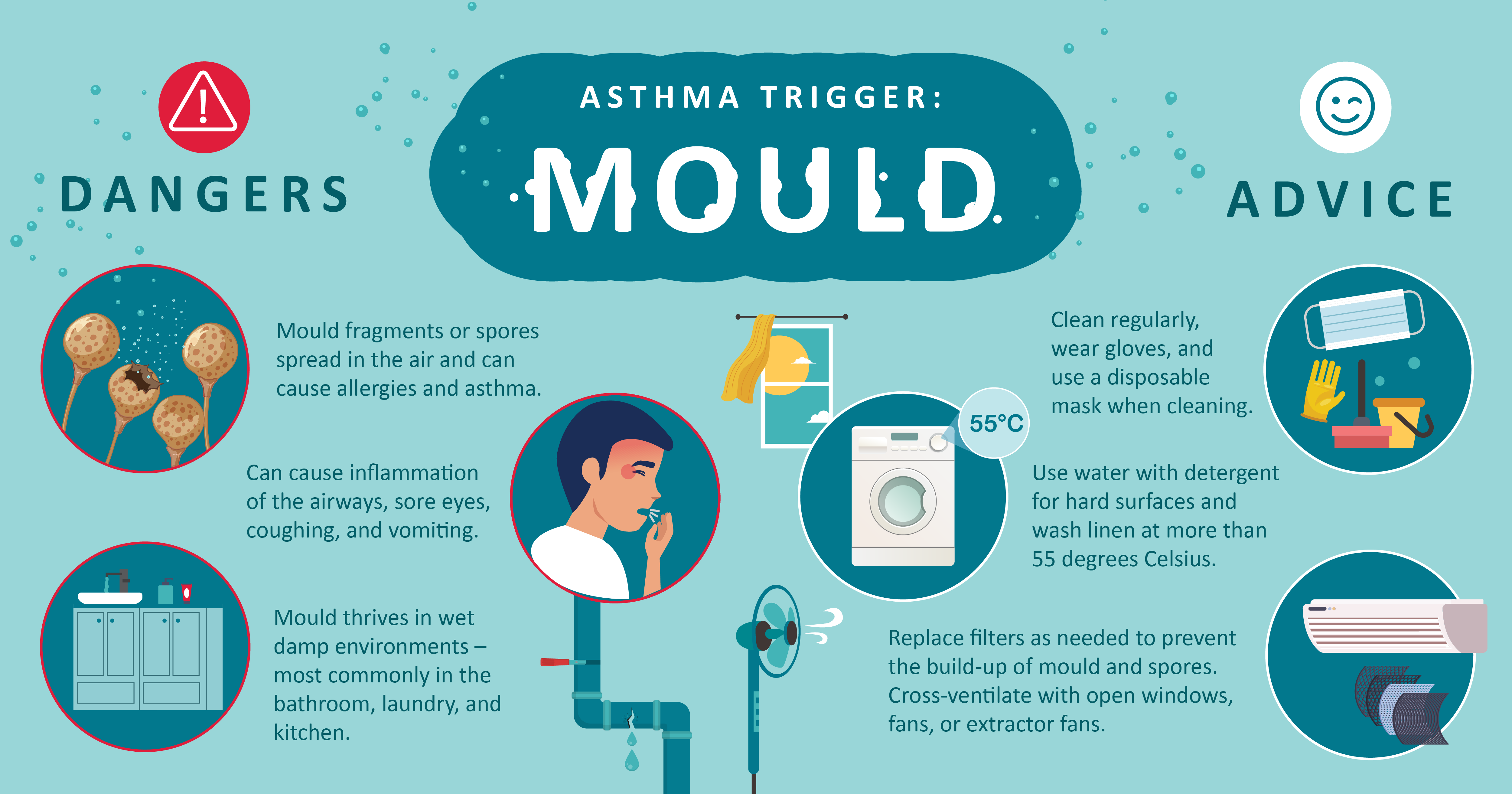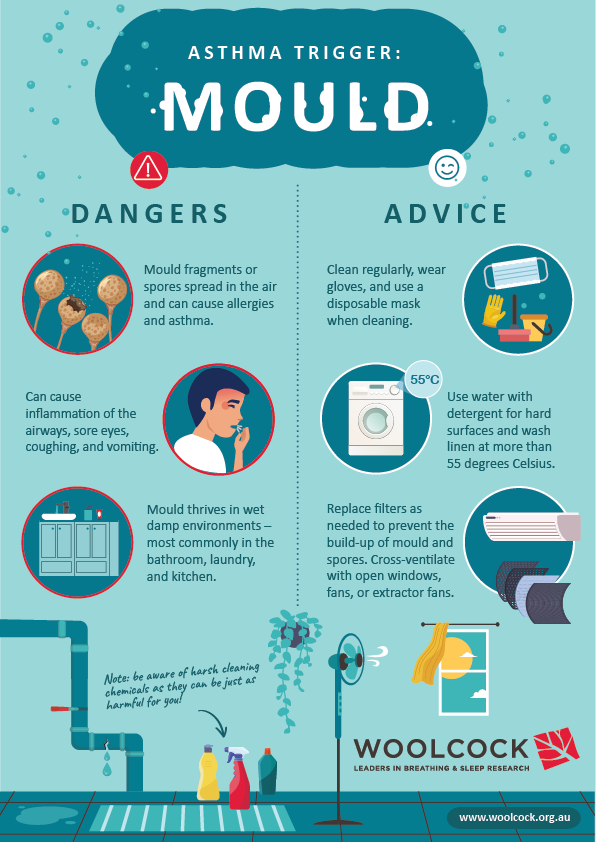The Woolcock Institute of Medical Research

Navigating the hazards: How mould can trigger asthma
In the second of the Asthma Week series covering known triggers in the home for people with asthma, the Woolcock’s Distinguished Professor Brian Oliver and Dr Christine Cowie, talk about mould in the home.
Mould can grow anywhere in the home and take many different forms and colours from smudges, stains and general discolouration to hues of green, black, brown and orange.
It can be more prevalent in river valleys and coastal areas, making its way indoors through water leaks, heavy rain and flooding, and even via moisture laden air. Excessive moisture on surfaces or within materials can also be a catalyst for fungal growth.
Mould and dampness are particularly concerning for those with asthma as it can lead to wheezing, coughing and other respiratory tract symptoms.
“Dampness and mould should be prevented where possible and remediated immediately to prevent exposure. The bottom line is that anything that we breathe in that is not pure air will affect us, even the spores from airborne mould,” said Professor Brian Oliver.
Mould can become airborne in various ways, such as during cleaning, or even taking a shower in a mouldy bathroom. Once it becomes aerosolised, you are breathing in another microorganism into your lungs, which is not going to be good for you.
While addressing the cause and eradicating mould is the most effective solution, this may not always be financially viable.
CAN WE MINIMISE THE RISK?
A simple and effective solution is to ventilate the home adequately – opening doors and windows and allowing airflow throughout will assist with the build up of condensation and excessive moisture.
Maintaining a consistent indoor temperature can reduce the risk of increased condensation and indoor dampness in the colder months, but rising electricity costs may make this prohibitive for many.
Running mouldy fabrics, stuffed toys, clothing or bedding through a hot wash cycle is also a simple and effective solution.
ARE CLEANING PRODUCTS THE SOLUTION?
Exercise caution if you’re trying to mitigate the effects of mould with nice smelling cleaning products as they often contain irritants and manufactured chemicals.
“Beware of cleaning products that contain chemicals like limonene which can cause irritation to the eyes, nose and throat, and even headaches and nausea” said Dr Christine Cowie. “Visible mould should be cleaned with simple, natural cleaning products like soap and water or a vinegar water spray and it’s best not to use a dry brush when cleaning as this can release more spores into the air”.
It’s also advisable to wear a disposable face mask and gloves when cleaning.
“We've adapted to our modern lifestyles, and we have all these modern conveniences, but a lot of the old ways are probably far safer and cause less triggers”, said Professor Brian Oliver. “Reaching for the bleach should not be the solution either, as it can be harmful to the person using it as well, irritating the eyes and respiratory tract.
As we build more energy efficient housing with tighter seals, we need to ensure that residents still open windows and doors on a daily basis to allow for natural ventilation to help prevent and control moisture and dampness. Designing living spaces with adequate cross-ventilation is also a step in the right direction.
Find out more











